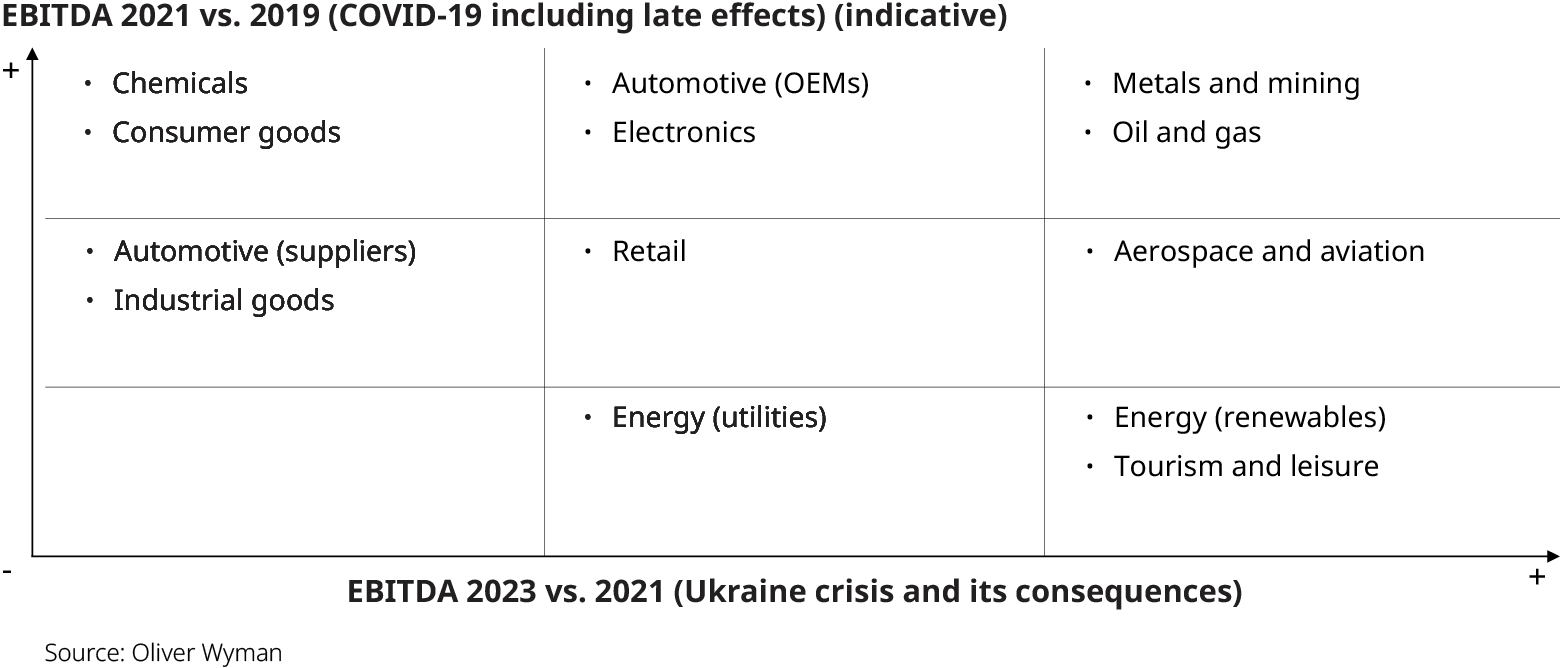Even after more than two years, the COVID-19 pandemic still impacts the global economy. But most companies across Europe have weathered the COVID-19 crisis well: The steep drop of global economies in 2020 was mitigated by effective state aid measures and capital available from banks or capital markets which helped to secure liquidity in the crisis. As a result, the companies across Europe emerged strongly from the crisis in 2021. Revenues in Q2 2021 were already 6% above the same period pre-crisis, and EBITDA margins improved by more than 300 basis points. At the same time, companies were able to increase their cash levels well above the increase of debt, hence reducing their net financial debt and leverage significantly.
A closer look at individual industry sectors, however, paints a more nuanced picture. Some sectors, such as tourism or aviation, still operate at lower revenues and EBITDA margin compared to pre-crisis levels. Others, like the metal and mining industry, have grown and improved their EBITDA significantly. (See Exhibit 1).
The late effects of COVID-19 are amplified by the impact of the war in Ukraine
As a result of the crisis, costs for important commodities and container transport rates have exploded. This development is further amplified by the impact of the Russian invasion in Ukraine on global supply chains. Shortages of supplies add to these challenges as they hinder the completion of products and keep capital locked in higher inventory levels. The re-financing of state aid, access to capital, and rising interest rates are perceived as much less of a challenge.
 80% of our surveyed experts think that the late effects from the COVID-19 crisis will drive companies into large-scale distress in 2022
80% of our surveyed experts think that the late effects from the COVID-19 crisis will drive companies into large-scale distress in 2022
Some industry sectors face high risk - but capital is availabe if the strategy is sound
The pressure expected on 2023 profit levels differs across industry sectors. Companies that operate with global supply chains, depend on commodities, and consume a lot of energy have little negotiation power over customers, and suppliers will face high challenges. This is the case for many automotive suppliers and for manufacturing, engineering, and construction companies. At the same time, these industries are undergoing disruptive changes such as electrification of power trains, digitization, and the need for environmental, social, governance (ESG) compliance. The disruptive shifts can create a “perfect storm” for some companies that will need to be weathered in the next years. However, managers who can adapt their businesses to cope with changing markets and rising operational challenges will still be able find capital providers willing to satisfy their financing needs.
Read our annual Restructuring Report below to learn more about the state of European companies caught between those two crises and find out which challenges remain from the COVID-19 crisis and which new ones will arise.



